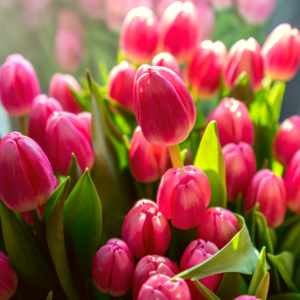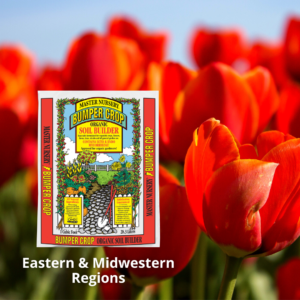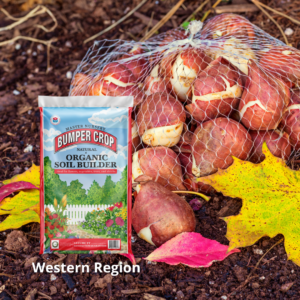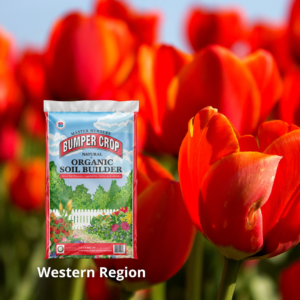It’s finally here, that time of year that we’ve all been anticipating – fall! And, you know what fall means? Tulip time!
The cooler days of fall entice us back into the garden that the August heat forced us to abandon. This is when your local Master Nursery® Garden Center is brimming with fresh, new, seasonal plant material and overflowing with fall-planted, spring-flowering bulbs. And, we wish to point out, that no bulb type is more treasured than the tulip. With an almost limitless selection (100 species and over 3000 varieties divided into 15 distinct groups), you’ll never tire of the tulip.
Tips for Planting Tulips
Tulips are an easy-care addition to any garden or landscape, and they are simpler to plant than many gardeners realize. Tulips need cold winters to stimulate blooms. They flower effortlessly and, in most cases, return for many years in USDA Hardiness Zones 3 – 7. Tulips may be grown in Zones 8 – 11 with a pre-chilling period of 10-14 weeks at 35 to 45°F. In these warmer climates, tulips are treated as annuals.
Tulip 10 Step
- Choose only top-sized, firm bulbs without bruises or obvious damage. Bigger bulbs generally indicate better quality and will provide more and larger flowers.
- Bulbs should be planted as soon as purchased, otherwise store them in a cool, dry location until ready to plant. Plant tulip bulbs before the ground freezes. When planting in Zones 8 – 11, store bulbs at 35 to 45°F until planting time.
- Choose a full or part sun location to plant tulips. A semi-shady location provides some relief from the heat in Zones 8 – 11.
- If planting a large number of bulbs, consider digging a free-form bed or trench in which to plant. Individual holes are appropriate when planting a small number of tulips.
- Planting beds and holes should be well-draining and the soil enriched with plenty of Master Nursery® Bumper Crop® Soil Builder [Eastern & Midwestern Regions | Western Region].
- Plant tulips at the depth of three times the height of the bulb, approximately 6 inches deep.
- Always plant pointed end up.
- Apply a generous amount of bone meal at planting time.
- Backfill with the excavated, amended soil.
- Water the planting area thoroughly and mulch generously after planting tulip bulbs.
Tried & True Tulip Selections
Some tulips can be a little finicky, and while these may disappear from your garden after a year or two, other selections promise trouble-free blooms for years to come if planted and cared for correctly. Proper bulb planting starts with amending your soil with Master Nursery® Bumper Crop® Soil Builder [Eastern & Midwestern Regions | Western Region] to ensure a healthy and nutritious planting environment with excellent drainage.
Species Tulips
Species Tulips are by far the longest-lived tulips and will even naturalize when given advantageous growing conditions. Small in stature, species tulips are an excellent choice for rock gardens and for planting in the front of beds and borders.
Darwin Hybrids
Darwin Hybrids perennialize quite well and are valued for their long-stemmed and large brightly colored flowers available in a wide range of hues. These mid-season bloomers make excellent cut flowers.
Emperor Tulips
Emperors are also good perennializing tulips. These modern hybrids are known for their substantial, elongated blooms borne on tall stems. Some even boast decoratively patterned and mottled foliage.
The temps are cooler, the garden is waiting, and your local Master Nursery® Garden Center is ready for you. So, what are you waiting for? Take advantage of tulip time and prepare for a bright and floriferous spring!










